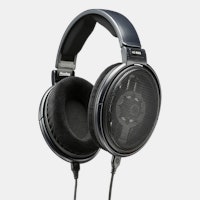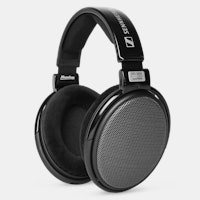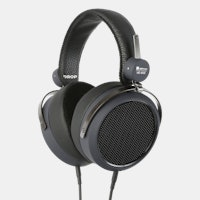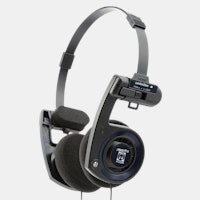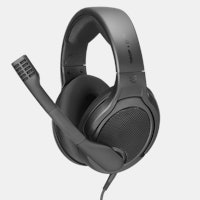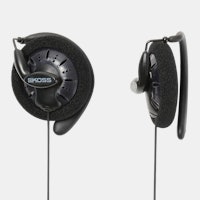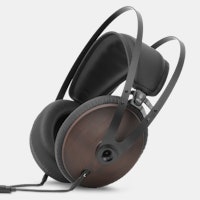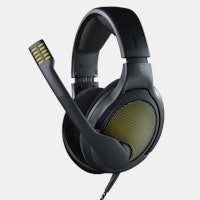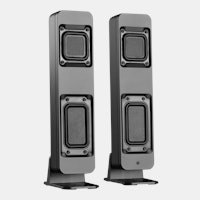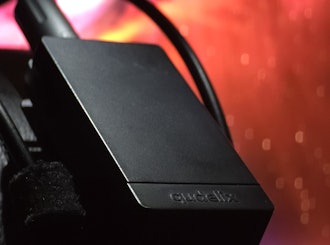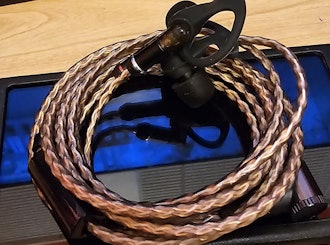Click to view our Accessibility Statement or contact us with accessibility-related questions












Showing 1 of 59 conversations about:
HiFi Music: Listening, Sources, Tracks?
By

Duncan

EdinNJ
271
Feb 3, 2019
Want to find out with your own ears whether lossless matters? Go listen to Radio Paradise, through whatever gear you listen through. First, listen to their 128K stream. Then their 192K stream. Then their 320K stream. Then their 16/44 lossless stream. Decide.
Important to blow off all the "nobody can tell the difference" cult since several million people clearly seem to be able to tell. But there are things to consider. Now this gets long.
What you listen through matters. If you're streaming through your iPhone, you won't be able to sort 320K from any lossless. That's not because humans can't tell the difference. It's because iPhone's DAC is a secondary feature, implemented to be good enough with 256K Apple files. If it sounds good enough for YOUR ears with the gear you listen through, why bother with more?
On my three main listening rigs streaming Radio Paradise, I can accurately ID each of the different stream depths. So have many guests who aren't terribly interested in fancy audio gear but who asked me the questions you're asking. You can accurately tell even with an old Logitech Touch as the DAC, if the rest of the sound production gear is high quality.
I always get "wow, this sounds so much better on your gear" when guests are over. People get up in the middle of dinner and look around the corner into the family room because it sounds like the performers are in there. My library's minimum bit depth is 16/44. About a third of my music library is 24/48 or better. I don't have a million dollar rig (I have friends who do, bless them.) My whole family room setup, acquired over the years when I could afford to upgrade this or that, would go for under $10,000 brand new. Five speakers, DAC, AV pre-pro, and amp. On that system, I can (and so have visitors) accurately tell the difference between a 24/96 version of a song and a 16/44 version. Same is true of the system that would, all in, go for less than $6,000 (my art studio). And for the system that all in would go for under $2500 (master bedroom.)
On that lowest end system, I can't hear differences between 24/96 and higher bit depths. I can easily tell 24/192 versus 24/96 on the other two.
Here come the exceptions. Electronica is PRODUCED at 16/44 (or worse, some EDM producers record at Apple Store bit depths) most of the time so anything at higher bit depths is simply reproducing 16/44. Some music gets recorded at 16/44, or on low quality recording gear, or just badly. Higher bit depth files don't fix that.
If your music is Alabama Shakes, MC5, SoundGarden, Metallica - you'll be hard pressed to tell 16/44 from 192K. The music is all compressed up with no dynamic range (search "loudness wars"), and dynamic range is one area where bit depths really matter. If an album's DR is less than 7, don't buy anything over 16/44.
Another factor is complexity of the musical sounds. A vibrating acoustic string puts out huge numbers of harmonics, as do most acoustic instruments, and most sound profiles for electronic jazz guitar or bass. Once you start electronically mashing, twisting, and stretching tones through electronic amps and distortion rigs, the complexity is reduced.
Another area where bit depth matters is presence. You won't ever hear the sound of the hall where a live orchestra or jazz group played below 16/44. A space creates harmonics. That sense of the space improves with bit depth, to a point. Many producers close mic and lose that sense of space. That's why performers seem to materialize in my listening rooms much more on some albums than on others. David Chesky records his label's albums in a handful of acoustically interesting spaces, using a recording mic that looks like a head with ears, and the mics are in the ears. Yes, you can absolutely tell that recording rig from a mass of regular microphones.
Finally, back to hearing. Just like you can learn to tumble, or drive a race car better than others, you can learn to hear better than others. I was a professional musician into my mid-20s, classical, big band, jazz, rock. I can tell if an orchestra is tuned to A at 440 hz or not. (Some orchestras tune slightly brighter, some slightly darker.) I can tell if a trumpet has a brass bell or a silver bell listening live, and on recorded music can only do that at 24/96 and above. All that and more was learned.
Trust your ears. If it doesn't sound different to you, think about all the money you'll save! If it does - why would you deprive yourself of more engagement and joy?

ILikeAcid
285
Feb 14, 2019
EdinNJIt's so nice when people know what they're talking about.

A community member
Apr 16, 2019
ILikeAcidAgreed!
PRODUCTS YOU MAY LIKE
Trending Posts in Audiophile

SsButerbal
Ringing in PC38X's
I recently got this headset, and wow is it good. My only issue is when certain people talk on discord, I can hear a really high pitched ringing. I fiddled with a bunch of settings, computer audio and discord, and nothing seems to solve the issue. It is primarily if not all in my right ear only. Is there something wrong with my headset, or was that ringing always there I can just hear it cause the headset is THAT good? I haven't had any issues with any other application, though I have yet to test if I can hear the ringing on a different version of discord, say on my xbox instead of my pc. Only other issue I've had is occasional static, but I can't tell if it's from the headset or the show/game/etc.
Apr 24, 2024
itsamepe
Sennheiser PC37X randomly goes bad after disconnecting the cable ?
Greetings, Yesterday I was using my headset like normal with my macbook, just listening to music and on a call with people like usual, and the headset was perfectly fine. The stock wire that came with the headset is extremely long and yesterday it annoyed me very much that it kept getting tangled with itself, so I decided to see if the cable is replaceable. I pulled out the cable from the headset and saw the adapter, and looked online for a replacement. Upon plugging it back in, the audio sounded extremely muffled and washed out. Im not sure what I did wrong to make it mess up like that as I've always taken good care of it, ive had it for about 2 years and its always just been chilling on my desk, but anywho I thought the cable just went bad and ordered a replacement. The replacement came, and the issue is still persistant, so I am not sure what the issue is I've tried multiple different headsets and the issue is not with the port, and I also tried it with my windows laptop and...
Apr 23, 2024

MrChiSox
Big changes coming to my tiny little music room, I've recently purchased a new stack. Currently figuring out where to locate it all and ordering up the necessary cables, it won't be too long before I'm up and running. I am now the proud owner of a brand new stack. It's a European brand called Earmen. Amp, DAC, Streamer & Linear Power Supply. It won't be long!
https://www.youtube.com/watch?v=MB15yM4UptQ
Apr 23, 2024

Briankan
Recommendation for my next headphone set? I have Koss 95x
Hey all, What would you recommend I get next and why? I have Koss ESP-95x electrostatic massdrop headphones. These are my first and only audiophile set. I love them. I think my only real requirements is $500 or less for the headphones and that they have a little more low end. I don’t need thump but these are really light on lows…but the experience is still awesome. Also any recommendations on an amp? I only have my electrostatic thingy. I am using the Topping D50 DAC. thx!!
Apr 22, 2024

Simthaniel
Rigs
Modded headphones with qudelix at the core
When I received the Qudelix 5K, I had already modified a pair of Superlux HD-681 headphones. I previously soldered my own balanced connections to the drivers, providing multiple ways to connect and...
Apr 14, 2024

brothamike
A decent set of IEMs
I am in the midst of a 300 hour burn-in but, I will say I am enjoying how this set sounds so far. Before I received these which was btw late by a few weeks, I purchased a Sony/Kimber Kable MMCX...
Apr 12, 2024
merrick97
Should I exchange the PC38X for better headphones?
I bought the PC38X headphones FOR GAMING and they are great, but I have NO use for a Microphone since I don't do competitive gaming and I was wondering if there were better headphone options at a similar price without a headphone, where (presumably) more of the cost was put into making it sound better. I also find that my PC38X don't get quite as loud as I would like and I was wondering if a cheap amp like the iFi Go link would draw a little more volume out of my phones. https://www.amazon.com/dp/B0BN6MM822?psc=1&ref=ppx_yo2ov_dt_b_product_details I went with the PC38X since it was considered the best bang for buck headphones. I care most about using spatial apps like DOlby Atmos and DTS Headphone:X. Suggestions are welcome.
Apr 11, 2024
